This Beadwork Helps Spread Awareness of Indigenous Issues in Health Care
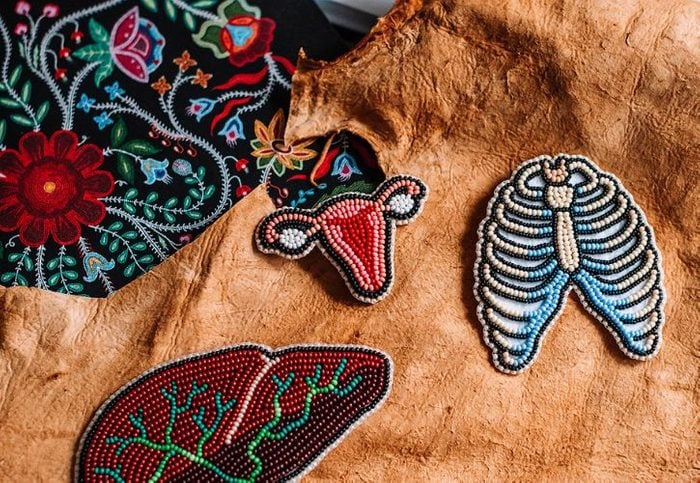
With her gorgeous beadwork, med student Jamie Thompson creates anatomical works of art—and makes Indigenous hospital patients feel more comfortable.
A pastel-hued cross-section of a brain. A multicoloured uterus with an IUD nestled inside. A chestnut-brown gallbladder laced with brilliant green ducts. Medical student Jamie Thompson pairs the beadwork tradition of her Indigenous heritage with the visual aids of her studies to make gorgeous pieces that advocate for culturally sensitive health care in the process.
“This is a fun, creative medium for me to reconnect to cultural ideas and spread awareness of Indigenous folks and Indigenous issues in health care,” she says.
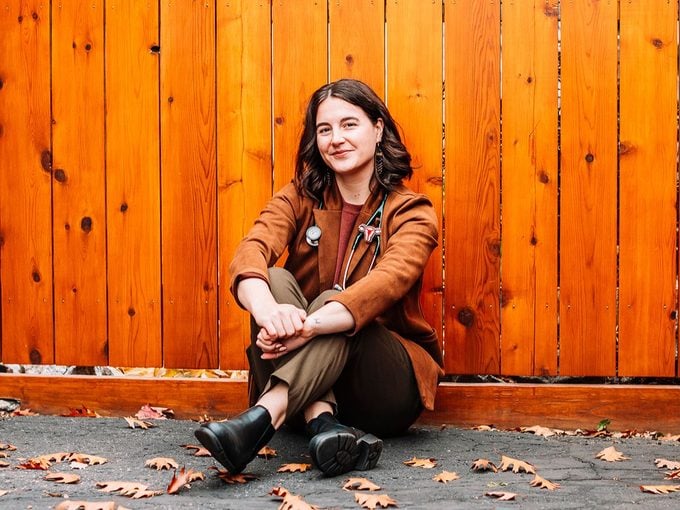
Thompson was raised in northwestern Ontario and now lives in Thunder Bay. She is of Métis and settler descent and grew up with traditional hunting and trapping practices, as well as plant-based medicine such as healing salves.
During the lockdown summer of 2020, she wanted to explore her Métis identity further and took part in a Métis Nation of Ontario youth gathering online. In a webinar hosted by the acclaimed Métis beadworker Mitch Case, she learned some of the basics. Using tiny seed beads, craftspeople sew intricate patterns onto materials such as felt, deer hide or moose hide. While Thompson attended virtual events that weekend, she worked on a small floral pattern, and she was soon hooked.
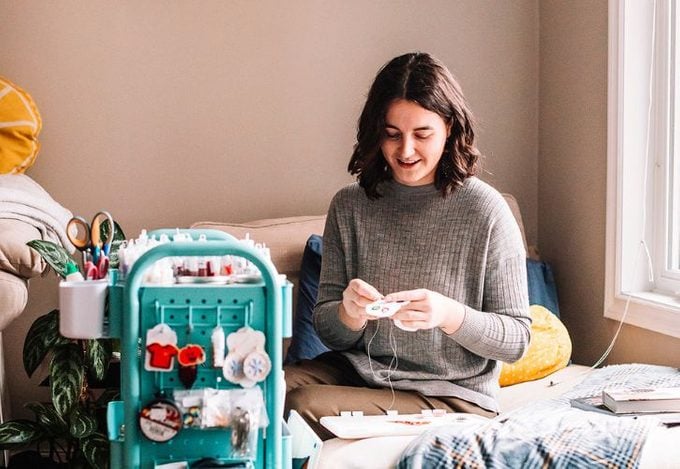
When her first year of medical school classes started that fall at Northern Ontario Medical School University, she began making tiny sketches of the organs she was studying. Then she started beading the designs as a way to help reinforce and memorize the diagrams. This is how she learned the names of blood-vessel systems in the brain, for example, or the anatomy of the eyeball.
After about six months, she posted her finished work on her @birchandbeads Instagram account. Later, she began selling some of her pieces—and stickers of her designs—online. The response was immediate.
“It’s been amazing to see the reception to my work, and to then use that space to talk about Indigenous health care and cultural safety, and what non-Indigenous health practitioners should be doing to provide it,” she says. This means creating and supporting a patient experience where a person feels safe receiving health care in a system that’s often marked by power imbalances, discrimination and racism.
Now in her fourth year of medical school, Thompson is working on a research project investigating how community members react to beadwork in health-care settings, and if med students who are wearing anatomical beadwork art—either clipped onto a lanyard, pinned to their scrubs or glued onto a retractable hospital badge—feel a responsibility to uphold values of equity and sensitivity as they interact with patients.
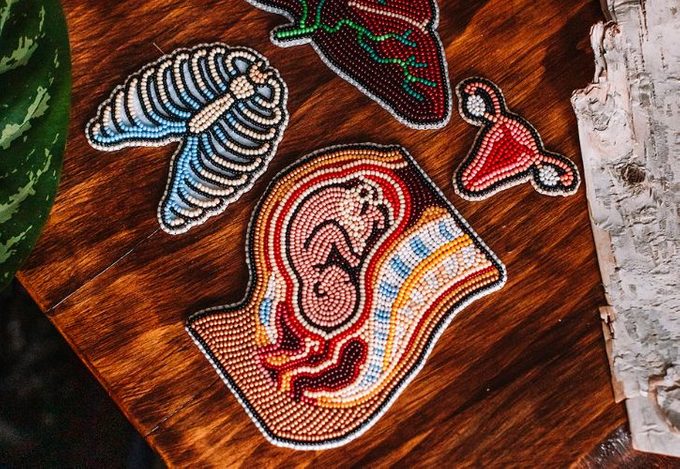
What does it mean to be an ally?
“The hope is that wearing beadwork in clinical environments makes them ‘visibly identifiable allies’ and, hopefully, less likely to be bystanders to breaches of cultural safety,” she explains. Wearers may be more conscious of their interactions with all patients and staff. She says the beadwork functions as a physical token “that almost says ‘hold me accountable.’”
Thompson has also started expanding the text that accompanies her Instagram posts, leading to larger discussions about colonialism and Western perspectives, whether it’s concerns about the use of animal hides in her work or people commenting “Eeew!” on a post showcasing a beautiful beaded vulva. She’s been invited to do presentations about the current state of the health-care system for Indigenous patients and how beadwork can play a supportive role.
As she learned to bead, Thompson has learned about the importance of your intentions as a craftsperson and maker. It’s about “the kind of place or space you want to be in mentally when you’re beading, and what kind of things you want to be sending into that beadwork, in the time that it takes to create a piece,” she explains. Smaller pins and badges can take one or two hours, but larger medallions or framed pieces can be 10 to 20 hours of work. “And then whoever the beadwork goes to, they’re inheriting and moving forward with those intentions.”
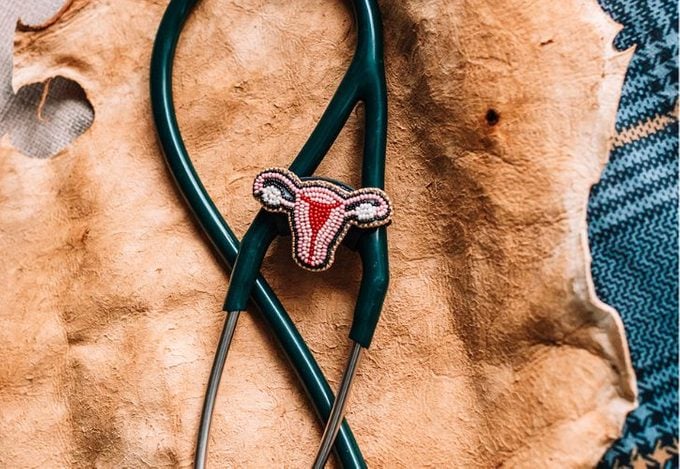
This is one reason Thompson believes it’s OK for non-Indigenous people to respectfully display or wear these Indigenous-made beaded items—it’s a sign of cultural appreciation, not appropriation.
The beadwork is a reminder to the wearer to be supportive, with both their words and actions. “Do the work to make yourself a more accountable ally,” she writes on her website, “so that when Indigenous folks view you with these pieces, you can be a safe space for them.”
Next: I Need You to Know: Good Relationships Are Vital to Good Health Care




